When I first moved into my neighborhood, a friendly neighbor welcomed me in with a beautifully potted aloe plant that she had propagated herself.
She was so good at growing them that she gave them to all the new neighbors, her family, and friends. It was such a lovely gift, but before long, I had accidentally killed it with kindness.
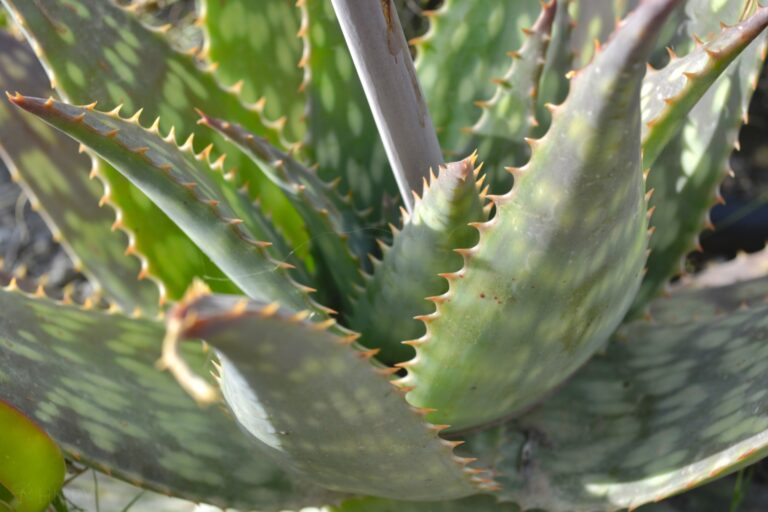
Embarrassed, I purchased another aloe plant to put in the same pot in the same window, because I didn’t want her to know I had killed her gift. That one also died, and I gave up on aloe plantings for quite some time.
Recently, a friend inspired me to give aloe plants a try once again, so here I am, trying to figure out how not to kill this useful little houseplant with some research on how to plant and grow aloe, and especially, aloe vera.
If you’ve ever killed an aloe plant, or you would like to know more about how to plant and grow aloe plants, you’re in the right place.
Keep reading to learn all about aloe plants, what they are used for, how to propagate, plant, and grow them. I recently purchased 3 new aloe plants in the hopes that I can grow them and propagate them successfully. Here’s how.
What Is An Aloe Plant?
An aloe plant, also known as aloe barbadensis miller, is a succulent, similar to a cactus. A succulent is a type of plant that stores water in its leaves and stems.
There are over four hundred species of aloe plants, but the plant most commonly found in the United States is usually referred to as aloe vera. Aloe vera means true aloe. Other common names for this plant include burn plant and first aid plant.
When you visit a link in this article that takes you to a different website where you can purchase something, I may earn a commission. Read my full disclosure for more details.
It is grown for medicinal, nutritional, and esthetic reasons. Aloe gel, from the aloe vera plant, is commonly found in creams, lotions, and cosmetics for its soothing and healing properties.
It is believed that aloe originated from the Sudan, but now it is cultivated all over the world for cosmetic, medicinal, and nutritional purposes. The largest producer of aloe in the world is in the United States. Aloe plants in Africa can become tree-like in shape and size.
What Does Aloe Look Like?
An aloe plant has a single stem into the ground. It has six to ten pointed leaves branching out in all directions. Each ‘leaf’ is thick and juicy and filled with aloe gel and liquid. The leaves have small points lining the flat sides.
Aloe plants can be large or small, with many leaves or just a few. Some are light green, some are dark green, some are variegated in color. They typically grow in a rosette fashion, although some will grow tall and spindly.
As a plant matures, the mother or parent plant will produce pups – small babies that come up from the roots of the plant. You can separate these and transplant them, and they will grow into new plants. The gel inside can be used for both medicinal and nutritional purposes.
How Is Aloe Vera Used?
Perhaps you remember your mom or grandmother always had an aloe plant in her windowsill, at the ready for soothing burns and wounds. It was quick and easy to break off a stem of the aloe plant and squeeze its soothing gel onto a painful burn or sunburn.
The soothing properties of aloe make it a common choice for cosmetics and creams and lotions. You may find it in sunburn cream, face lotion, cosmetics, and in the first aid aisle for burns. You may also find aloe vera juice in the organic or holistic sections of your grocery store.
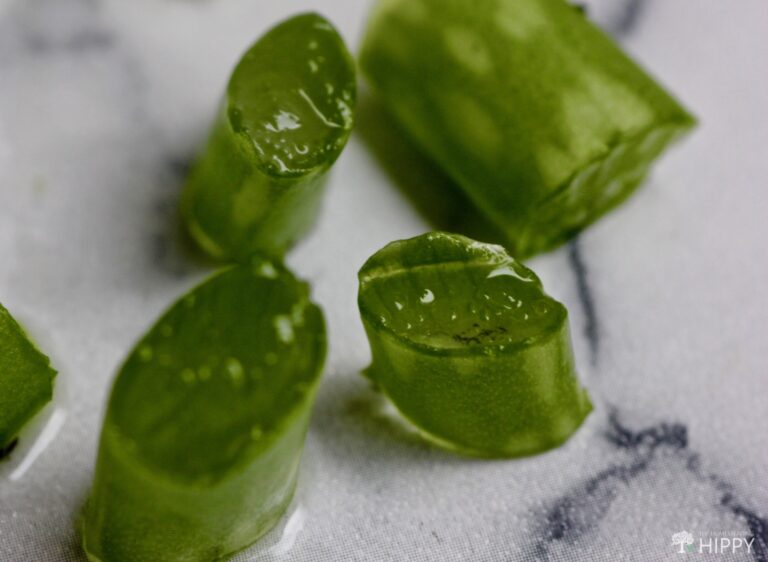
Is Aloe Edible?
While aloe is technically edible, there are some concerns you need to be careful about. Most people will squeeze the gel out of the leaf and apply it to their skin. However, this same gel is also edible and has a refreshing taste.
It is especially good in smoothies and juice drinks. However, there is a thin yellow liquid in between the gel and the skin which is called latex.
The aloe latex is a very powerful laxative, and could be very harmful if you ingest too much. If you want to eat the gel, just rinse the latex and any other debris off of the gel before you use it.
The skin of the aloe plant is also edible. It is crunchy and has a mild flavor, making it good to use in salads or with dips. Be careful to research and only eat the correct variety of aloe plant, as other species could be poisonous.
Do not consume cosmetic aloe vera gels or first aid creams as they are not safe to eat. Only consume products that are actual food items.
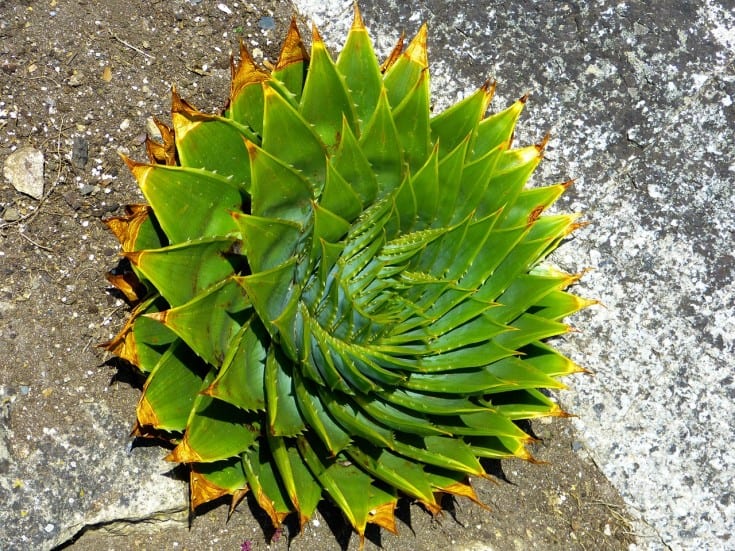
Varieties of Aloe
There are over 400 species of aloe plants. Some are popular house plants, while others grow in their native habitat. Here are a few to get you started:
- Climbing aloe. Climbing aloe, also known as aloe ciliaris, gets its name for its tendency to grow upwards. It grows orange, cone-like flowers which attract hummingbirds. Climbing aloe may need a little extra support when it begins to spiral, but this variety of aloe makes a lovely houseplant nonetheless.
- Lace aloe. This delicate succulent is also called aloe aristata or Guinea Fowl Aloe. It has dark green leaves with white speckles and reddish-orange flowers.
- Spider aloe. Aloe humilis, or spider aloe, grows in the form of a rosette with long triangular shaped leaves that bear white speckles. It grows red and orange flowers and its gel is often used for sunburn.
- Candelabra aloe. Octopus plant, as it is sometimes called, is also revered as the candelabra aloe and aloe arborescens. It grows red flowers over the winter. Studies may show that this type of aloe increases the effectiveness of chemotherapy for cancer patients.
- Snake aloe. This plant takes five to six years to reach full maturity. It’s worth the wait, and is one of the aloes that is frost-hardy. It is also known as aloe broomii.
- Soap aloe, or aloe maculata. This aloe creates suds from its juice, making it a substitute for soap. It grows naturally in South Africa and is highly drought tolerant.
- Spiral aloe.
- Tilt-head aloe.
- Tree aloe. Tree aloe is also known as aloe barberae. They can grow up to 60 feet high.
- Aloe vera or Aloe Barbadensis Miller. This is the most common variety of aloe, frequently found as a houseplant. It can grow yellow blooms, and has white spots on its leaves.
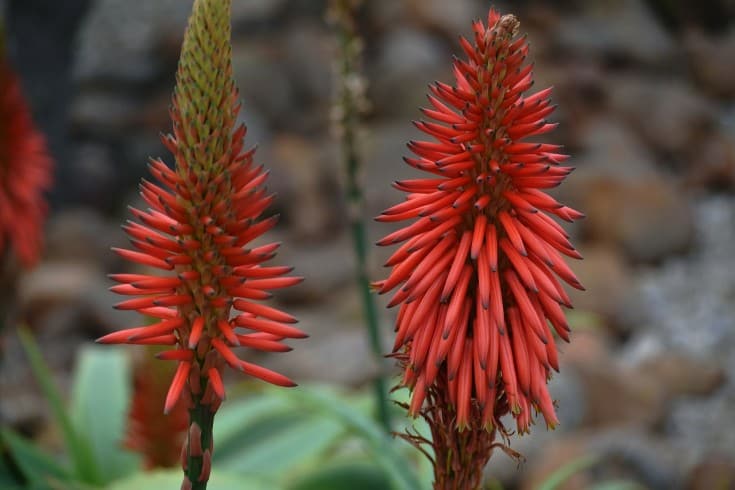
Where to Purchase Aloe Plants
If you’re lucky, you won’t have to purchase aloe plants at all, but can find a willing friend who will share his or her babies with you. If you don’t know anyone that owns an aloe plant, you can purchase aloe seeds online to propagate.
Or purchase healthy, sturdy plants at your local nursery or plant auction. I purchased mine on clearance from the grocery store for a $1.99 each.
How to Propagate Aloe
Succulents are an interesting bunch of plants. You can propagate succulents, including aloe, several different ways. They aren’t fussy, although you do have to watch out for bacteria and overwatering.
- From seed
- From a cutting
- From a pup
- From the stem
How to Grow Aloe from Seed
You can grow aloe from seed, although it is more common to share aloe pups among friends. You’ll need to sow your seeds indoors where it is warm and light without scorching sun, such as your kitchen or possibly a greenhouse.
You can use a mix of compost, sand or pumice, and wood ash or start them in cactus/succulent mix in small pots. Use a heat mat for the first two weeks. It takes two to four weeks for aloe seeds to germinate and sprout under the right conditions.
Too much moisture or mist can cause rotting or fungus, instead, carefully drizzle water around the seedlings.
How to Grow Aloe From a Cutting
Aloe is a miraculous plant in that you can cut off a leaf and grow it! The process is simple, although it takes a little bit of time. You’ll want to use a very sharp, clean knife so that you don’t transmit deadly viruses or bacteria into the flesh of your aloe plant.
Choose a leaf near the base and cut from the top of the leaf down towards the roots. Make a sharp, clean cut for best results. Lay the leaf or leaves off to the side in a warm, dry place.
It will take a day or two, or more, for a skin to develop over the cut part of the plant. This is essential so the plant doesn’t get bacteria in it.
After you have washed your pot and filled it with cactus soil, you will want to dampen but not soak the soil. Dip the end of your leaf in some rooting hormone and push the end of the leaf down into the soil.
Do not water the soil until it dries out. The leaf may wither a bit as it is growing new roots. Growing aloe from a leaf cutting is not always successful, but if you do not have any pups to transplant it is worth trying.
Aloe Pups
A pup is another name for an aloe offspring. It is a small plant that comes up naturally from the roots of a larger aloe plant. This is the most common and easiest means of propagating aloe.
When pups emerge, wait until they are around three to four inches tall. Carefully remove the entire plant system from the pot and gently brush off the potting mix.

Try to gently pull the baby away from the parent plant. If it has roots, it should grow. If it doesn’t have roots, it will probably die. If the plant does not come off easily from its parent, simply cut it apart with a sharp and clean knife.
Allow the mother and babies to breathe for a few days so that any cuts can develop a skin over top. This will prevent bacteria from entering the wound in the plant, especially if you used a knife to cut the plants apart.
After a few days, you are ready to plant your pups and repot your parent plant. Fill your pots with succulent soil and create a small hole or depression for the roots. Gently press each plant into the hole. Do not water for the first three days to two weeks, until the roots have begun to grow.
How to Regrow an Aloe from a Stem
If you find yourself with just an aloe stem or stalk, you may be able to get it to root with a similar technique as an aloe leaf. Use a very clean razor blade to cut the stem so it has a clean, straight cut.
Although the cut to dry for a couple of days so that the wound covers over and hardens just a bit. Insert the stem into your growing medium – cactus soil or potting soil mixed with perlite, sand, and lava will work.
Keep the soil slightly moist but not wet or soggy. Keep the pot and plant in a warm bright area, over 70 degrees F. Keep the stem out of direct sunlight.
After three to four weeks, you should see signs of new growth and you can check for roots. Once there is new growth, you can begin watering your aloe plant as normal, allowing it to dry out completely in-between waterings.
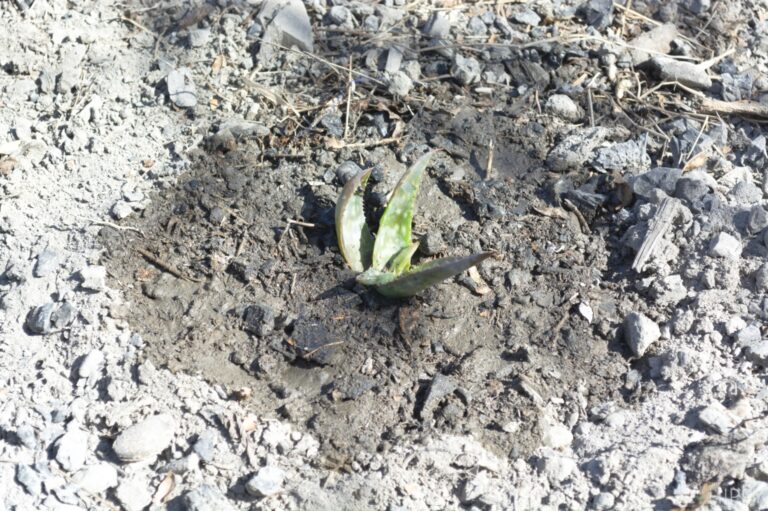
What Kind of Soil Does Aloe Need?
Succulents, cacti, and aloe do well in dry conditions. The easiest soil to plant your aloe in is simply a cactus potting soil mix, which you can purchase at nurseries, big box stores, or even amazon.com.
If you don’t want to purchase special soil, you can amend regular potting soil with either perlite or building sand to promote good drainage. You could also include coarsely ground lava rock.
You’ll want to choose a pot with good drainage as well. Clay or terracotta pots make good choices as they dry out fairly well.
Aloe plants will rot if there is any standing water in the pot, which is the most common cause of death in aloe plants. A heavy pot will help prevent top-heavy aloe plants from falling over and getting damaged.
How Often Do You Need to Water Aloe Plants?
Aloe plants do not like to sit in water. If they are too damp or wet, they will rot and die. Aloe vera plants do much better if they are able to dry out completely in between waterings.
You only need to thoroughly water your plant once every 7 to 10 days. You can probably water it less in the winter. Succulents hold water in their leaves, so don’t panic if you forget to water your beloved aloe once in a while. It should do just fine.
How Much Sunlight Does Aloe Need?
Aloe vera plants thrive in bright but indirect light. Surprisingly, they can be easily scorched in direct sunlight. A bright windowsill or filtered sunlight is a great option for these hardy plants.
Can You Grow Aloe Outdoors?
Aloe grows naturally in places like South Africa, and in more arid but warm desert regions. Aloe can be grown outdoors in zones 8 to 11, but not in colder locations.
If you want to have your aloe outside, you can grow it in pots and set it outside when the weather is more temperate.
Just bring the pots back inside when the weather turns colder and be sure not to let the plants be scorched in direct sun.
Aloe Diseases & Pests
Aloe is susceptible to diseases and pests just like any other plants.
- Aloe Cancer. This viral infection is highly contagious to other aloe plants. It is spread by mites and is also known as Witches Broom. There is no treatment; aloe plants with these ugly growths need to be destroyed. Nearby plants may also be infected and need to be destroyed as well. .
- Aloe Scale or White Scale
- Ants. Ants, alongside of mealy bugs or aphids can do enough harm to any aloe plant that it dies. Aphids suck the sap from aloe plants, and are carried by means of ants to other aloe plants, where they can pass on infections or other diseases.
- Rot. Rot is usually caused by overwatering an aloe plant, aka killing it with kindness. This can be prevented by allowing the plant soil to dry out thoroughly in between waterings.
- Snout Beetle aka Aloe Beetle
What to Do with Extra Aloe Plants
If your aloe plant is healthy, you will most likely be blessed with aloe babies. Many, many aloe babies. What should you do with them all?
- Smoothies. If you have the right kind of aloe, you can use the gel in smoothies or other healthy recipes. Check out this link for how to make your own aloe vera juice.
- Aloe vera may offer health benefits such as: clearing acne, reducing plaque, soothing skin problems, first aid for burns and cuts.
- Aloe vera provides Vitamin C, acts as an anti-inflammatory, and provides powerful antioxidants.
- Give it as gifts. Aloe vera plants make terrific gifts for housewarming, birthdays, office parties, and any other gift-giving occasion you can think of. Put a little aloe pup (or a big one!) in a customized pot for a treasured gift.
Tips for Succesfully Growing Aloe Plants
- Don’t over-water.
- Allow soil to dry completely before watering again.
- Don’t allow aloe plants to sit in water.
- Allow the plant to become somewhat rootbound before repotting.
- Keep aloe out of direct sunlight but in bright, indirect light.
- Fertilize twice a year with cactus or succulent fertilizer according to the directions.
- Use cactus or succulent soil, or potting soil with a mix of perlite, sand, or lava rock.
- Plant in a heavy pot so your aloe vera does not become top-heavy and tip over.
As an inexperienced aloe owner, I killed more than one with kindness and overwatering. It’s no wonder I lost my precious plants.
However, you can avoid my earlier mistakes by allowing the soil to dry out thoroughly in between waterings, using the right kind of soil, and keeping your plants out of scorching direct light.
If your plant is healthy and growing, in time, you’ll be rewarded with lots of baby plants to grow and share.
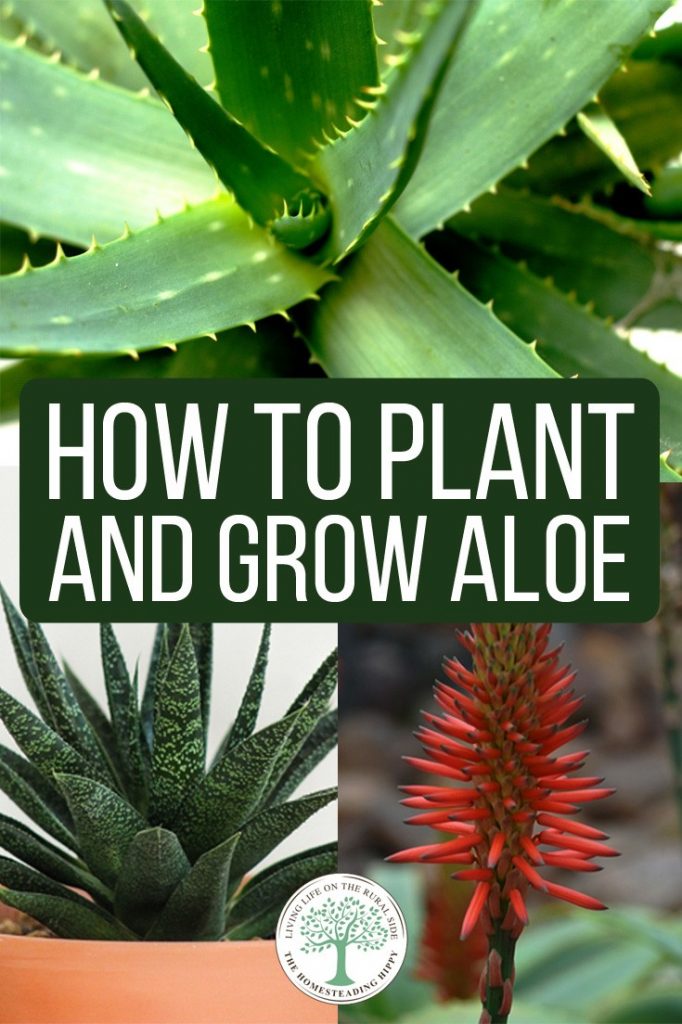

Amanda is a homesteader and a Jesus-loving, mother of 6 toddlers. She’s raising lots of fancy chickens and goats on her small homestead (among other things). Find out more about the team here.

Another super article. Congratulations